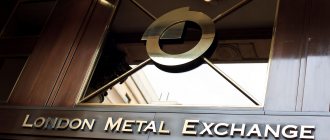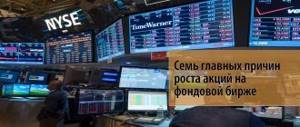Author: Yango.Investments
The most popular savings instruments for Russians continue to be deposits, currency and real estate, according to a study by the World Gold Council (WGC). Only 10% of private investors in Russia invested in stocks and bonds in the last 12 months. But they still prefer products based on life insurance and even cryptocurrencies over securities, which have surpassed gold in the top five most popular instruments among Russian investors. Who invests in Russia and how - in Yango's review and infographics based on the results of the WGC survey.
READ IN THE ARTICLE:
✔ Russians are looking for reliability and simplicity ✔ Hope for gold ✔ Men and women in Russia invest differently ✔ Where do Russians get information about investments ✔ Demand factors: why do people in Russia invest? ✔ How technologies are driving the investment market
© When using site materials and quoting - a link with a URL is required
How the number of exchange clients grew
As the analytical service of Realnoe Vremya found out, from December 2018 to the present day, there has been an avalanche-like increase in the number of registered clients on the MICEX (Moscow Interbank Currency Exchange). Over the past 15 months, their number has increased 2.6 times, reaching almost 8 million by April of this year. Rapid growth began in February last year; in the spring of 2021, the number of participants increased by 1 million - from 2.9 to 3.9 million. By October their number had already reached 5 million, and by the end of the year - 6 million. In 2021, the MICEX added another 2 million clients.
However, most of them are individuals. Of the more than 8 million registered clients, only 26 thousand are legal entities, 20 thousand are foreigners (individuals and legal non-residents). There are only 76.5 thousand clients who transferred their funds to trust management. That is, if the number of individual registered clients on the MICEX has increased by 2.5 times since January last year, the number of foreign individuals has increased only by 1.4 times, and accounts in trust management by 1.6 times.
Number of registered clients in the Trading System (as of the last day of the month)
| Client groups | December 2018 | January 2019 | February 2019 | March 2019 | April 2019 | May 2019 | June 2019 | July 2019 | August 2019 | September 2019 | October 2019 | November 2019 | December 2019 | January 2020 | February 2020 | March 2020 | April 2020 | ||
| Individuals | 2 951 667 | 3 076 511 | 3 217 988 | 3 380 571 | 3 562 705 | 3 745 596 | 3 936 612 | 4 205 558 | 4 511 765 | 4 754 345 | 5 073 106 | 5 553 003 | 6 136 566 | 6 478 903 | 6 801 041 | 7 390 062 | 7 926 534 | ||
| Legal entities | 24 752 | 24 596 | 24 642 | 24 755 | 24 805 | 24 605 | 24 586 | 24 757 | 25 221 | 24 873 | 25 146 | 25 340 | 25 489 | 25 503 | 25 524 | 25 787 | 26 047 | ||
| Foreign persons | 15 812 | 15 850 | 16 068 | 16 308 | 16 593 | 17 385 | 16 961 | 17 254 | 18 215 | 17 752 | 18 124 | 18 376 | 19 071 | 18 834 | 19 194 | 20 043 | 20 380 | ||
| Foreign individuals | 10 265 | 10 328 | 10 548 | 10 805 | 10 986 | 11 351 | 11 424 | 11 667 | 12 593 | 12 178 | 12 520 | 12 796 | 13 384 | 13 276 | 13 677 | 14 515 | 14 770 | ||
| Foreign legal entities | 5 547 | 5 522 | 5 520 | 5 503 | 5 607 | 6 034 | 5 537 | 5 587 | 5 622 | 5 574 | 5 604 | 5 580 | 5 687 | 5 558 | 5 517 | 5 528 | 5 610 | ||
| Clients who transferred their funds to the trust | 45 423 | 46 305 | 47 357 | 48 043 | 48 993 | 50 032 | 50 023 | 51 522 | 54 363 | 54 026 | 56 793 | 59 847 | 67 776 | 70 718 | 73 515 | 75 471 | 76 569 | ||
| Total | 3 037 654 | 3 163 262 | 3 306 055 | 3 469 677 | 3 653 096 | 3 837 618 | 4 028 182 | 4 299 091 | 4 609 564 | 4 850 996 | 5 173 169 | 5 656 566 | 6 248 902 | 6 593 958 | 6 919 274 | 7 511 363 | 8 049 530 | ||
At the same time, newcomers demonstrate unusual activity
Let us note that the sheer number of registered clients does not directly mean an increase in the number of direct physical participants, but is in direct correlation with it. Any individual or legal entity can open several accounts in their name with one or different brokers - these accounts are counted among the number of registered clients. However, all these accounts are ultimately registered in the same name or company, and they are accounted for on the MICEX as unique clients (“uniques”). The number of unique clients, roughly speaking, citizens of Russia or foreign countries with a specific first and last name, has grown 2.4 times since the beginning of last year - from 2 million to 4.9 million individuals. On average, one person thus registered more than one account on the exchange.
The very activity of clients on the Moscow Exchange has increased even more. The number of active clients in the trading system, that is, those who made at least one transaction within a month, was falling at the beginning of 2019. The number of such clients in January 2021 fell from 200 thousand to 188.6 thousand (which is also due to the January weekend), only by the beginning of spring last year it reached 192 thousand, and the number of active clients began to grow consistently since the summer of last year. Having crossed the mark of 300 thousand who concluded at least one transaction per month in October, the MICEX reached 400 thousand active participants by the end of last year. And by April 2021, more than 600 thousand clients were already active on the exchange. Thus, with an increase in the number of new registered and unique clients by 2.5 times, the number of active Russian clients, individuals, at the same time increased by as much as 3.5 times (active foreigners also increased, but by 2.5 times).
Number of unique clients in the Trading System (as of the last day of the month)
| Client groups | December 2018 | January 2019 | February 2019 | March 2019 | April 2019 | May 2019 | June 2019 | July 2019 | August 2019 | September 2019 | October 2019 | November 2019 | December 2019 | January 2020 | February 2020 | March 2020 | April 2020 | ||
| Individuals | 1 955 118 | 2 032 931 | 2 124 042 | 2 228 680 | 2 345 873 | 2 464 521 | 2 578 398 | 2 741 361 | 2 894 450 | 3 068 547 | 3 253 953 | 3 527 188 | 3 859 911 | 4 067 317 | 4 253 153 | 4 572 906 | 4 891 213 | ||
| Legal entities | 16 631 | 16 590 | 16 658 | 16 743 | 16 794 | 16 758 | 16 818 | 16 917 | 17 007 | 17 183 | 17 389 | 17 527 | 17 695 | 17 706 | 17 783 | 17 928 | 18 138 | ||
| Foreign persons | 11 453 | 11 564 | 11 740 | 11 947 | 12 185 | 12 375 | 12 464 | 12 726 | 12 945 | 13 213 | 13 455 | 13 688 | 14 011 | 14 182 | 14 404 | 14 988 | 15 242 | ||
| Foreign individuals | 8 880 | 9 007 | 9 162 | 9 372 | 9 523 | 9 715 | 9 801 | 10 045 | 10 269 | 10 528 | 10 770 | 10 998 | 11 298 | 11 477 | 11 693 | 12 282 | 12 515 | ||
| Foreign legal entities | 2 573 | 2 557 | 2 578 | 2 575 | 2 662 | 2 660 | 2 663 | 2 681 | 2 676 | 2 685 | 2 685 | 2 690 | 2 713 | 2 705 | 2 711 | 2 706 | 2 727 | ||
| Clients who transferred their funds to the trust | 29 262 | 29 851 | 30 559 | 30 898 | 31 398 | 31 803 | 32 273 | 33 008 | 33 858 | 33 842 | 35 116 | 36 567 | 41 535 | 43 400 | 45 201 | 46 297 | 46 759 | ||
| Total | 2 012 464 | 2 090 936 | 2 182 999 | 2 288 268 | 2 406 250 | 2 525 457 | 2 639 953 | 2 804 012 | 2 958 260 | 3 132 785 | 3 319 913 | 3 594 970 | 3 933 152 | 4 142 605 | 4 330 541 | 4 652 119 | 4 971 352 | ||
Number of active clients in the Trading System (who made at least one transaction during the month)
| Client groups | December 2018 | January 2019 | February 2019 | March 2019 | April 2019 | May 2019 | June 2019 | July 2019 | August 2019 | September 2019 | October 2019 | November 2019 | December 2019 | January 2020 | February 2020 | March 2020 | April 2020 | ||
| Individuals | 190 235 | 171 003 | 180 137 | 181 523 | 201 740 | 202 222 | 219 409 | 255 652 | 246 960 | 260 021 | 306 419 | 321 799 | 392 163 | 425 108 | 447 887 | 606 725 | 596 607 | ||
| Legal entities | 1 055 | 867 | 996 | 1 040 | 1 122 | 990 | 1 028 | 1 072 | 988 | 1 075 | 1 203 | 1 192 | 1 366 | 1 142 | 1 120 | 1 273 | 1 157 | ||
| Foreign persons | 955 | 932 | 943 | 973 | 1 076 | 1 066 | 1 065 | 1 163 | 1 159 | 1 190 | 1 336 | 1 310 | 1 425 | 1 604 | 1 633 | 2 168 | 1 961 | ||
| Foreign individuals | 702 | 693 | 696 | 721 | 813 | 816 | 805 | 898 | 905 | 920 | 1 069 | 1 047 | 1 138 | 1 322 | 1 358 | 1 879 | 1 709 | ||
| Foreign legal entities | 253 | 239 | 247 | 252 | 263 | 250 | 260 | 265 | 254 | 270 | 267 | 263 | 287 | 282 | 275 | 289 | 252 | ||
| Clients who transferred their funds to the trust | 8 906 | 15 826 | 12 676 | 8 468 | 10 390 | 6 140 | 6 874 | 10 939 | 14 298 | 12 222 | 10 794 | 10 207 | 17 573 | 11 671 | 16 622 | 18 131 | 16 415 | ||
| Total | 201 151 | 188 628 | 194 752 | 192 004 | 214 328 | 210 418 | 228 376 | 268 826 | 263 405 | 274 508 | 319 752 | 334 508 | 412 527 | 439 525 | 467 262 | 628 297 | 616 140 | ||
Reduction of the Central Bank rate, uninteresting returns on deposits - why Russians chose the stock exchange
A significant increase in the number of clients is associated with a gradual decrease in the profitability of other investment options, says Dmitry Lesnov, head of the department for monitoring, control and development of client service at FINAM Group of Companies. This primarily concerns deposits. According to Lesnov, now the average rate on them is about 5%, and the shares of many companies not only have a much higher dividend yield, but also retain significant potential for growth in value even after the situation with the coronavirus pandemic normalizes. This is what attracts more and more investors to the stock market.
Vadim Lozhkin, director of the Kazan branch, explained to Realnoe Vremya that the current significant influx of clients into the financial market is primarily associated with the process of reducing the key rate of the Central Bank of the Russian Federation, which directly affected the profitability of bank deposits, which, as a result, also decreased . This forced citizens to look for new, more profitable ways to preserve and increase their savings, the expert agrees with his colleague from FINAM.
In addition, Lozhkin points out, in the first quarter the domestic stock market was actively declining, which created additional opportunities for implementing long-term investment plans at attractive prices. Sberbank also agrees with the director of Otkritie Broker, whose representatives, however, stated that the growth of the base was affected not only by a decrease in interest rates on deposits, but also by the development of digital services.
VTB also noticed an increase in the number of active clients of the exchange. The manager of this bank in Tatarstan, Maryam Davletshina, believes that it was the consistent reduction of the key rate of the Central Bank of the Russian Federation, as a result of which the yield on deposits smoothly but steadily decreased from 7.5% to 5.2%, that stimulated an increasing number of bank clients to consider other instruments investments that would ensure more efficient placement of personal capital and the preservation of its purchasing power.
Why do many people work on the stock exchange using the “buy and forget” system?
Despite the growth in registered clients, the number of active MICEX clients in the total number of clients is still low. Before the last boom, the share of those who carried out at least one transaction per month did not exceed 10%; in March-April 2021, however, there were already 12-13.5% of them, the analytical service of Realnoe Vremya found out. Among individuals who open new accounts on the stock exchange, explains Dmitry Lesnov, most are conservative investors. “Conservatives” prefer to invest in reliable and profitable (compared to bank deposits) instruments. There is another category of clients - long-term investors who have now formed portfolios of shares of companies that, over an investment horizon of several years, can show significantly higher returns compared to alternative investments.
— That is, both categories of clients adhere to strategies that do not involve regular trading operations. This is a completely normal situation. They typically only do a few deals a year. Hence the low share of active accounts,” Lesnov is sure.
Active trading is not suitable for every client, notes Vadim Lozhkin, director of the Kazan branch; many work on the exchange using the “buy and forget” system. And this approach is precisely the most productive for those who invest for the long term and do not intend to make money on constant changes in stock prices.
Procedure for receiving state assistance
Investment from budgets of all levels is carried out after the conclusion of government contracts. The state, acting as an investor, is interested in the effectiveness of the project it finances. The effect does not have to be to make a profit.
The effectiveness of investments can be proven with the help of a feasibility study - a serious document with detailed calculations of where each ruble is sent (directions of investment), what effect it will bring (social, economic, environmental, budgetary, etc.) and when it will come back (payback period of the project ). Without such justification, it is impossible to receive government money.
Government contracts are concluded for:
- design and survey work,
- construction,
- reconstruction,
- restoration,
- technical re-equipment,
- acquisition of an object.
Funds from the budget are sent to government customers (government bodies) or organizations to which government agencies have transferred their powers as part of concluding a special agreement or decision (act). These authorized persons are:
- State corporations and companies that will invest budget money in facilities. And the latter will then become the property of the Russian Federation.
- Legal entities whose share in the authorized capital belongs to the Russian Federation. Objects financed by the state will then be transferred as a contribution to the authorized capital of such an enterprise.
For example, under a government contract for the construction of a launch complex at the Vostochny cosmodrome, the customer is the Directorate of the Vostochny cosmodrome, and the contractor to whom the authority to carry out the order is transferred is the Kazan production and construction association.
The agreement must contain:
- investment purpose;
- the volume of investments distributed by year and for each financed object;
- name of the object, its capacity;
- period of construction (reconstruction) or acquisition of the object;
- rights and obligations of the parties to the transaction;
- responsibility;
- the procedure for conducting inspections by the customer (government agency).
The number of brokerage accounts and transactions is growing in Tatarstan
“Therefore, a minority is active in the market, and the majority buys securities with the expectation of receiving income in the more distant future.
By the way, an individual investment account remains one of the popular instruments,” explains Lozhkin. — This investment instrument is more understandable for a wide range of private investors, but also does not involve scalping or active trading. In addition, some clients would like to invest and have opened an account, but are not yet psychologically ready or do not know where to start. The majority of new clients lack investment experience and knowledge about financial planning and markets - they do not know where to start investing, how and what instruments to choose, which explains the low activity of the majority in Sberbank. The largest bank in the country, they noted, therefore pays special attention to the topic of teaching financial literacy not only to existing clients of brokerage services, but also to the Russian population in general.
The number of brokerage accounts in Sberbank in all regions of Russia has increased by 30% since the beginning of the year, and in Tatarstan by 34%. In just 4 months of 2021, more than 25% of Tatarstan clients made transactions.
— The exchange considers an account active if there is at least one transaction per month. New investors, as a rule, invest in the lowest-risk instruments - bonds,” explains Maryam Davletshina, manager of VTB in Tatarstan. — In the month of purchase, the account is active, then, if the client does not make new transactions for 11 months, he leaves the active list. From January to April of this year, 8.2 thousand brokerage and investment accounts were opened at VTB in Tatarstan, which is more than seven times higher than the same figure last year. The share of funded accounts was 61%.
Funded accounts, that is, accounts in which there are funds, are just for active clients and directly correlate with each other. However, it is worth noting that if a client deposited money into such an account, bought shares and does not intend to sell them in the next months, then at the time of the transaction the account will be considered active, but in subsequent months it will cease to be so. For obvious reasons, the share of funded accounts will be higher for real players who have experience investing in the stock market. For example, the share of such accounts in FINAM is high, said Dmitry Lesnov. Simply because a significant part of the company’s client base are investors with serious experience and knowledge in the field of investing, who exhibit high trading activity.
Types of investment instruments
An investment instrument is an asset in which an investor invests money in order to receive benefits. All investment instruments can be divided into:
- Savings instruments are designed to protect capital from inflation and other risks. This category includes deposits, OFZs, and precious metals.
- Multiplication tools - aimed at generating potentially high income. These include shares, corporate bonds, real estate, mutual funds, and structured products.
In prosperous Tatarstan, in the spring of 2021 they preferred to speculate on the stock exchange
“Many of them use margin lending to increase the profitability of their accounts, and also use complex financial instruments such as futures and options in trading strategies,” notes Lesnov.
Dmitry Lesnov explains the increase in the number of clients in Tatarstan by the fact that the region has a high level of income. This state of affairs cannot but be reflected in the dynamics of opening brokerage accounts. FINAM, like Sberbank, is also now recording a higher growth in opening accounts in Tatarstan than even the national average. The situation in , Vadim Lozhkin told Realnoe Vremya: from January 1, 2021 to April 30, 2020, more than 1,600 new accounts were opened in the Otkritie Brokera branches in Tatarstan, but this is still 40% less than for the entire 2019 year. “Accordingly, by the end of the year we expect a significant increase in new clients.”
Nevertheless, and according to Lozhkin, the number of active clients in Tatarstan is significantly higher than in Russia as a whole. In 2021, their share was 38%; in 2021, it decreased slightly to 33%, due to the influx of a large number of novice investors without experience of trading on exchange markets.
— In general, the behavior of Otkritie Broker clients in Tatarstan differs significantly from the actions of investors in Russia as a whole. Thus, for the most part, the company’s clients trade in the stock section (in March - 70% of all active ones, in April - 63%), while in the Republic of Tatarstan during this period the nature of transactions was speculative - more than half of the transactions were carried out on the derivatives section of the Moscow Exchange. Clients were actively trading futures for the dollar, euro, gold, Brent, RTS index, shares of Sberbank, VTB and Gazprom, Moscow Exchange index, US dollars, shares of LUKOIL, Rosneft,” he said.
At the same time, only 24% of Otkritie Broker clients traded on the Moscow Exchange stock market. There, Tatarstan residents actively bought cheaper shares of Gazprom, ordinary and preferred shares of Sberbank, VTB. The oil industry was not spared either, acquiring LUKOIL, Rosneft, and ordinary and preferred securities of Tatneft. They also believed in the prospects of Aeroflot.
Only 2% of clients converted currencies on the foreign exchange market. Photo: cbkg.ru
In Russia as a whole, in March and April, interest in the currency increased among clients due to jumps in exchange rates, but not in Tatarstan. Only 2% of clients converted currencies on the foreign exchange market. In addition, in April, the company's clients throughout Russia actively purchased shares of foreign companies on the American exchanges NYSE and NASDAQ, as well as on the St. Petersburg Stock Exchange. At the same time, in the Republic of Tatarstan the share of transactions in foreign markets was only 2%. The average amount of assets in the accounts of Otkritie Broker clients in Russia is just over 880 thousand rubles. In Tatarstan it is a little more - more than 882 thousand rubles. In general, clients in Kazan continued the course taken back in March towards active account replenishment. And compared to last year, they increased the assets in their accounts by 85%.
The share of Russians with brokerage accounts is still very small - the number of MICEX clients will continue to grow
Experts and market participants interviewed by Realnoe Vremya are confident that the positive dynamics both in the number of new clients and in the growth in the number of active players on the exchange will continue. Private investors continue to show increased interest in brokerage services, Sberbank notes:
— We see that since the beginning of the year the total number of brokerage accounts, active clients, funded accounts has increased and the volume of trading operations has increased. We think that the positive dynamics will continue, the market will grow and develop.
The FINAM Group expects the same thing due to the expected further decrease in the key rate of the Central Bank, and, consequently, a decrease in the profitability of bank deposits, the number of brokerage accounts will continue to grow at a rate approximately comparable to the indicators of the first quarter, Dmitry Lesnov is sure:
— Now the share of Russians with brokerage accounts is slightly more than 5%. For a financially developed country, this is still a fairly low figure. In addition, as we emerge from the pandemic, prices for resources will also recover, and, consequently, the value of shares of Russian companies will also increase. All this will certainly lead to a further increase in the influx of new investors into the stock market.
Brokers are required to more actively use training programs and information and analytical support. Photo: investingnotes.trade
How budget investments differ from others
Budgetary investments can be obtained upon fulfillment of certain obligations, and according to Russian legislation are available to many who fulfill a number of conditions. Since the state is both an investor and a regulator, it is worth understanding that budget allocations must be subject to strict and systematic reporting, and those who receive them place a huge responsibility on their shoulders. It is also worth highlighting a fundamental aspect: what is the difference between budget investments and subsidies. The first is a direct injection of funds or the purchase of shares, the second is an alternative, for example, preferential holidays, reduction of tariffs or commissions. In the first case, the state can become the owner of the business, in the second - not.
“The private investor is becoming a significant player on the Moscow Exchange”
Lozhkin believes that the most active phase is behind us, although the influx of new clients to the stock market will not stop. This process will be stimulated by a further drop in deposit yields. The ratio of active and passive investors in Russia will generally remain the same, he believes, although there is hope that increased financial literacy will gradually stimulate the use of different strategies, not just “buy and forget,” and will help overcome the first barrier of self-doubt.
— In any case, the private investor is becoming a significant player on the Moscow Exchange, so brokers are required to more actively use training programs and information and analytical support. Another significant trend for the financial market is the change of generations. Among investors, young and middle-aged people predominate, for whom the financial market is not something hostile and incomprehensible. Accordingly, the need to more actively manage their savings will direct representatives of these age categories to use investment opportunities to generate their income, including pension income, the representative is confident.
Sergey Afanasiev
EconomicsInvestmentTechnologyAnalytics VTB BankDavletshina Maryam Nailevna
Government investments in Russia
Today Russia has an unbalanced economy. The lion's share of all state budget revenues is profit from the sale of energy resources and raw materials.
This economic structure requires recovery.
In addition to the energy and raw materials sectors, others need to be developed. The way out of this situation will be to increase the overall investment attractiveness of Russia and improve its investment climate.
The development of leading sectors of the economy requires funds. The state urgently needs to develop measures to attract private capital into the economy by creating preferences and benefits for investors.
Today, public investment in Russia means financing the defense complex, resolving social obligations to citizens, and maintaining the salaries of public sector employees at the proper level. Blind investing in emerging sectors of the economy is in short supply.
The development of direct public investment in Russia is entrusted to the Direct Investment Fund, which it copes with with varying degrees of success.
The main problem is the restriction regarding the participation of at least one foreign investor in the project. In other words, the fund is not able to invest in an attractive investment project if foreign capital does not participate in its implementation.
Budgetary investments in Russia are sorely lacking, although there are plenty of sources of formation. The government of our country is reluctant to invest in the economy, if we consider the situation as a whole.
In order to change this and the flow of budget investments to flow into our economy, the country’s leadership needs to develop priority directions for development and follow them using all available tools to attract capital.











